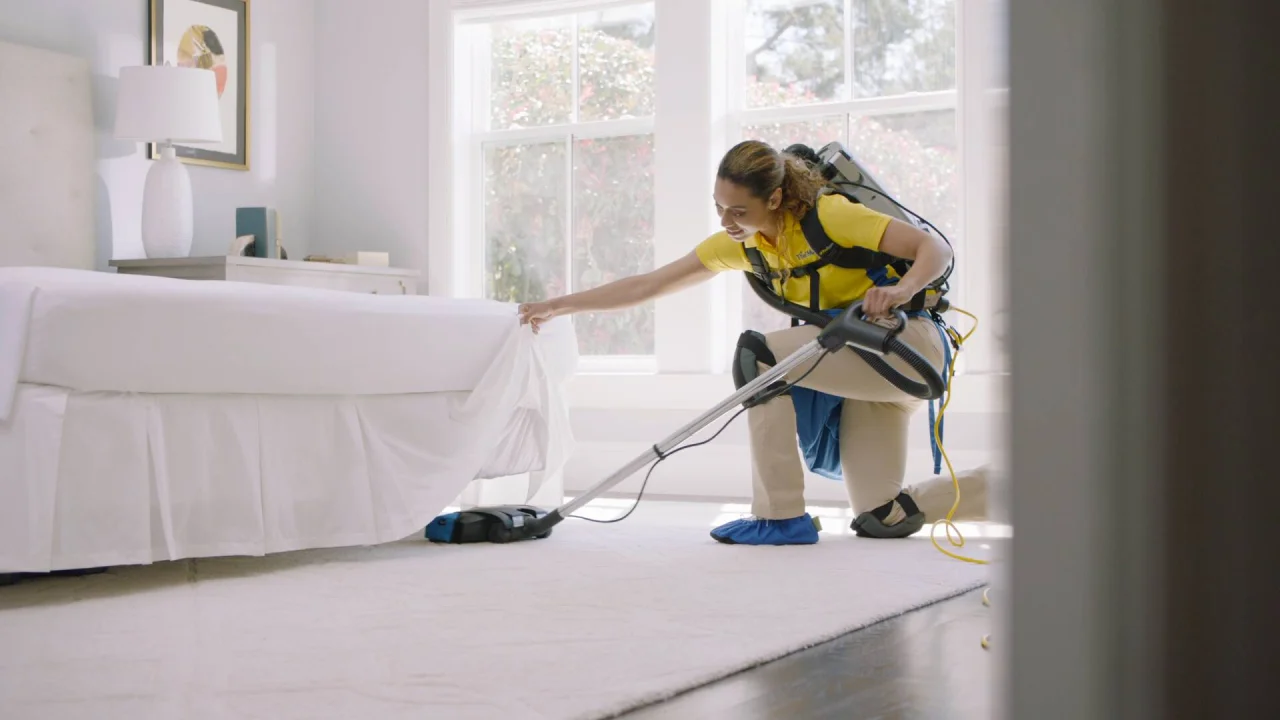Mould is something most people don’t think about until they actually see or smell it. Indoor mould isn’t only ruining the appearance of your home but is also dangerous to your health. Mould isn’t just an eyesore – it’s bad for your health, too! It can cause headaches, breathing issues, and even asthma. So don’t ignore it – take action! If you don’t take care of it soon, it will become more severe and cover a larger area. Once it’s settled and spread, mould is quite a hassle to get rid of it, so the best course of action to keep it at bay is to be proactive.

Preventing and Combating Mould
The key to mould growth is moisture, so controlling the fungi is a matter of controlling moisture. Ventilate often, remove moisture and immediately clean any signs of mould growth. Improper ventilation may cause it to grow on walls, furniture, or personal property, especially during damp and humid weather. This isn’t only unpleasant, but also, for some people, mould can be an irritant and cause allergic reactions.
If you notice mould in the bathroom, increase ventilation. Turn on the exhaust fan or open a window after every shower in addition to cleaning more frequently. Besides that, keep your bathroom door closed during showers and baths. Keep your kitchen door closed and the room well-ventilated while cooking or while you have the dishwasher on. In general, ventilate your house for a minimum of 30 minutes daily by opening the windows. But cross-ventilation is key, so make sure you open interior doors in addition to the windows. Doing this lets excess moisture escape out rather than settling on the walls, floors, and ceiling.
In Addition to Ventilation, What Else Can You Do?
Keep in mind that opening the windows is only one method of controlling mould on-set, and it won’t always be effective. If the humidity outdoors is above 60%, opening your windows will only bring in more moisture, especially if the weather’s hot. If it’s raining, opening the windows will also be ineffective. In addition to opening the window to prevent mould onset, you can also:
- Invest in a good humidifier. If you can’t handle the cold air during winter and opening the windows isn’t an option, buying a humidifier is a great way to reduce the overall moisture inside your home. If you go for one with digital readings, try to keep the humidity level below 40 percent.
- Buy or plant plants that absorb moisture. Besides that, move moisture-releasing plants outside.
- Avoid air-drying clothes inside. Drying your clothes in badly ventilated rooms during the winter months can lead to mould and fungus growth. In fact, hanging wet clothes is one of the most common reasons for mould growth because it causes condensation.
- Fix any leaks that you have at home. Leaks around windows or exterior-to-interior doors can let excess moisture inside. Besides moisture entering from the outside, check indoor plumbing as well. Since mould grows at a rapid pace, the longer you leave a leak unfixed, the more likely you are to experience mould.
- Make sure your home’s ventilation system is functioning correctly. Always use a ventilation fan after showers or baths and inspect the air ducts and change the furnace filters regularly.
- Store your quick-to-decompose possessions properly. Store items such as books, piles of loose papers, or boxes of clothing away from external walls or windows that are prone to condensation. Pick an area with good air circulation to prevent the possibility of moisture build-up.
- Clean the bathroom surfaces as often as possible. Bathrooms produce the most moisture in a home, which naturally results in mould growth. Use mould-killing cleaners when cleaning the bathroom and also the areas of your kitchen where moisture tends to collect.
- Take proper care of entryways during cold and wet weather. It’s recommended to place area rugs and other washable flooring instead of wall-to-wall carpets. Entryways are spaces where constant traffic can bring in moisture and lead to mould growth. If you have a wall-to-wall carpet in this area, vacuum it regularly.
If you’re dealing with mould growth on walls, you can safely remove minor patches by cleaning them with a diluted bleach solution and thoroughly drying them. However, it also depends on the material of your wall and the extent of mould contamination. If you’re dealing with a minor mould problem and decide to do it yourself instead of hiring professionals, generally, cleaning with a bleach and water solution should do a sufficient job.
To remove mould from painted walls, you’ll need:
- Rubber gloves
- N-95 mask
- Goggles
- Household bleach
- Warm water
- 2 large buckets
- 2 sponges or disposable rags.
We also recommend you have a spray bottle, towel, humidifier, and a (HEPA) vacuum handy.
Preparing to Remove the Mould
To prepare for the mould removal process, first, make sure that the cause of mould, such as a leak or water damage, has been properly dealt with and the area has been dried. There can be many different reasons for mould growth on your walls, such as condensation, especially in bathrooms, a leaking pipe, or a broken down damp course. Put on your protective equipment and open a window to make sure that the room you’re working in is properly ventilated. Remove any materials that have been contaminated with mould, such as carpets, wallpaper, or insulation. Double-bag them and dispose of them. Cover any large items and upholstered furniture with plastic sheets sealed with duct tape.
Removing Mould from Walls
To remove mould from painted walls, follow these steps:
- Fill one of the buckets with soap and water.
- Fill the other bucket with diluted bleach solution. To prepare it, mix 3,7 litres of warm water with 1 cup of bleach. Diluting the bleach will help kill the mould without causing damage or discolouration to the paint. Don’t use undiluted bleach or mix it with ammonia.
- Using a spray bottle or sponge, dampen the mouldy areas. This stops the spores from getting into the air.
- Dip the sponge or rag into the bleach mixture and scrub the whole region carefully until the mould is not visible anymore. Make sure that all sections of the painted walls with or near the mould have been treated.
- Wait at least 10 to 15 minutes for the bleach solution to soak and kill the remaining mould.
- Soak a clean sponge or rag in the soap and water solution and wipe the area to remove the bleach residue. Don’t use the same sponge or rag you used to apply bleach. Rinse the sponge in the bucket as many times as you have to until the entire wall has been cleaned.
- Dry the entire area with a towel or use a dehumidifier to remove as much moisture as you can.
- After the area has been thoroughly dried, use a (HEPA) vacuum to clean any remaining dust and mould debris. Once you’re done, empty the contents of the vacuum into sealed plastic bags and dispose of them.
Removing Mould from Painted Walls
To be on the safe side, if your walls are painted in colour, it’s best to use a solution without bleach because it may remove the colour and leave an obvious patch. To remove mould from a coloured wall, use warm water, a mild detergent-like washing liquid, and a kitchen scorer. Add a bit of washing liquid to a bowl of warm water. Soak the scourer and use the sponge to wash over the affected area. Wipe the washed area, and repeat until all the mould is gone and the wall is almost dry. Use kitchen paper to wipe the wall clean, with a fresh piece for each wipe.
Bleach method
If you decide to use this method, remember to wear thick clothes (preferably ones you don’t mind getting ruined), rubber gloves, and a face guard. Both the mould and bleach fumes can be dangerous to inhale, and this product should be used with extreme caution. Never mix bleach with ammonia, and keep children and pets away during treatment. For this method, mix one part bleach with four parts water. Use a damp cloth to gently scrub the surface until the mould’s gone. Once you’re done, dry the area with a soft cloth. The downside of this home remedy is that it won’t work on porous surfaces like wood or drywall unless it’s used with a special detergent.
Bleach-less method
The bleach-less method described above only works for surface mould. Mould on walls can also be removed with vinegar. Because of its acidic pH, it attacks the structure of the mould, breaks it down and eventually kills it. It’s less harsh than bleach, does a good job of removing surface and ingrained mould, and it’s a good choice for coloured walls.
Mix 3 parts water with 1 part vinegar and add a bit of washing liquid. Spray onto the wall, wipe it with a damp sponge, and dry it with kitchen paper. Still, it can leave a bit of a smell after using it, and it only works for mild mould cases.
Home Remedies for Mould Removal
Some home remedies for mould removal include:
Baking soda
Baking soda is a great natural alternative to bleach. It’s been used to fight mould for generations, and many people still think it’s the best. Its high pH stops mould from growing. Plus, it works on all surfaces – porous and non-porous. To use it, mix a quarter teaspoon of baking soda with two cups of water, then pour it into a spray bottle. Spray the mouldy area, scrub it, and rinse. To stop the mould from coming back, spray it again. Baking soda is gentle and doesn’t contain any harsh chemicals, so it’s safe for your family and pets. Plus, it won’t damage your property. However, it may not be strong enough for major mould problems, unlike bleach or other commercial products.
Essential oils
Essential oils can do more than just make your house smell nice. Tea tree oil is a great natural insect repellant, antiseptic, and deodorizer, and it can even help remove mould. It’s a safe and natural fungicide that works quickly and can help keep mould spores from coming back. Just mix 1 tsp of tea tree oil with 1 cup of water in a spray bottle and shake. Spray it on the mouldy area, let it dry for an hour, then wipe it off with a cloth or towel. Don’t forget to wear gloves, though – tea tree oil can irritate the skin.
Citrus
Citrus, especially lemons, are great for cleaning, deodorizing, taking out stains, and disinfecting. They can even help get rid of mould. Lemons’ acidity breaks down mould, making it easier to clean and disinfect. Squeeze 3-5 lemons and spray or pour it over the mouldy area. Leave it there for 5 minutes, then wipe the surface with a damp towel or cloth. For tougher stains, reapply and scrub the surface.
Conclusion
Despite all that, even if you treat the mould problem and it goes away if your home remains damp due to poor ventilation, the problem will eventually return despite all your efforts.
Keep in mind that in more serious cases, DIY mould removal isn’t advisable because it can actually allow the mould to regrow and spread. So your best bet is to contact your local cleaning company. They have all the solutions to your mould problem.

